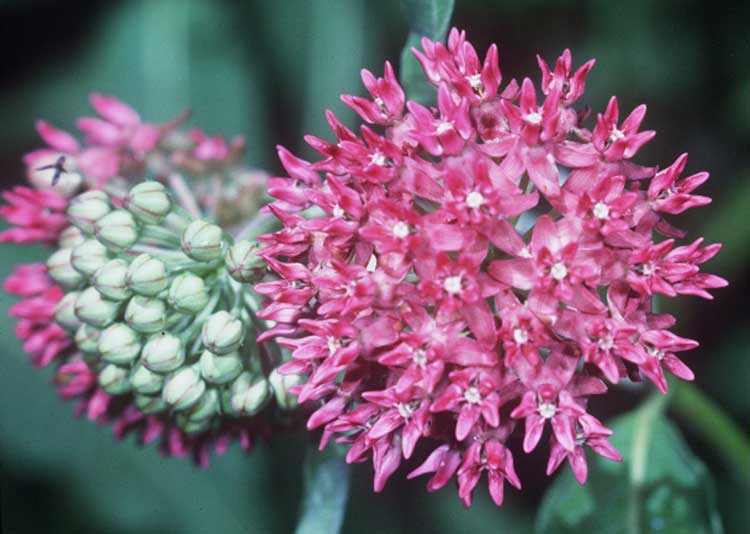Asclepias purpurascens , William C. Taylor @ USDA-NRCS PLANTS Database / USDA SCS. 1989. Midwest wetland flora: Field office illustrated guide to plant species. Midwest National Technical Center, Lincoln. Cladus: Eukaryota Name Asclepias purpurascens, L. References USDA, NRCS. 2006. The PLANTS Database, 6 March 2006 (http://plants.usda.gov). Data compiled from various sources by Mark W. Skinner. National Plant Data Center, Baton Rouge, LA 70874-4490 USA. Vernacular names -------- Purple milkweed (Asclepias purpurascens) is a herbaceous plant species. It is in the genus Asclepias, making it a type of milkweed. It is native to the Eastern, Southern and Midwestern United States similar to the range of the Common Milkweed (Asclepias syriaca). The plant gets its name from the flowers that first develop a pink color but then turn darker purple as they mature.
Like other members of the milkweeds, several insects live off the plant, including the Monarch Butterfly (Danaus plexippus), the Milkweed beetle (Tetraopes tetraophtalmus), Large milkweed bug (Oncopeltus fasciatus), Small Milkweed Bug (Lygaeus kalmii) and Milkweed Leaf Beetle (Labidomera clivicollis). Other insects and pollinators feed off the flower's nectar. This species is sometimes cultivated in gardens designed to attract butterflies, but it less common than the light purple Swamp milkweed (Asclepias incarnata) or the orange Butterfly weed (Asclepias tuberosa). The nectar of the plant attracts many other species of butterflies and insects as well. References * Blanchan, Neltje (2005). Wild Flowers Worth Knowing. Project Gutenberg Literary Archive Foundation.
* USDA Plants Profile: Asclepias purpurascens Source: Wikispecies: All text is available under the terms of the GNU Free Documentation License |
|

